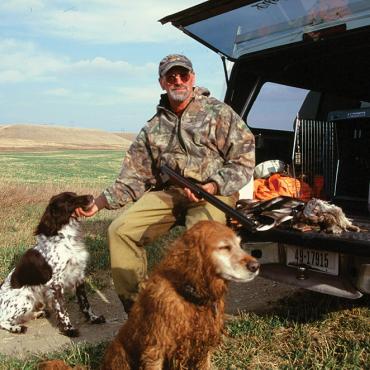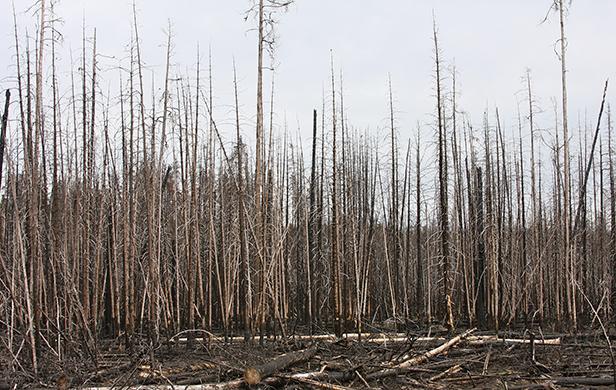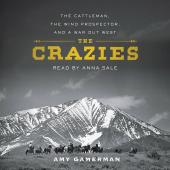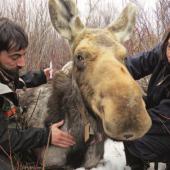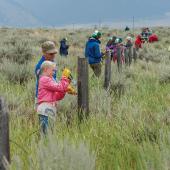The Wilderness Mess
When ecological systems are free to play themselves out on a large scale, things get a little dirty—and that’s a good thing.
Close friends of mine know that around mid-August, I generally have a hitch in my getalong—a souvenir of our annual eight-day backpack to the northeast quadrant of the Greater Yellowstone Ecosystem.
We’ve been picking off drainages and peaks in this feral landscape for the past two decades, and one of my hiking partners claims we’ve trekked 2,000 miles—my feet think it’s even more.
On a scale of one to ten, I’d rate this area’s wildness an 11. Backpackers are few and far between, and even experienced horsemen know that the sketchy trail conditions, steep drop-offs, abundant bears, swift-flowing streams, and epic lightning are all worthy of respect, if not serious concern.
Our most recent trip was a gem. From the trailhead, we lugged 50-pound packs 20 miles to the top of a drainage, then dropped into Yellowstone Park and the bizarre and remote Hoodoo Basin. We then climbed into another watershed that, 19 miles later, brought us back to our truck. Though roughed up a bit, we were in a euphoric, wilderness-altered state of consciousness. Stream-cooled Bozones never tasted so good.
Much of that landscape had been burned in the fires of ’88 and other more recent conflagrations. It wasn’t what you’d call “picture-postcard pretty.” Tens of thousands of ghost trees long since stripped of their bark studded the skyline or were strewn across the landscape like giant pick-up sticks. In the higher elevations, entire hillsides of whitebark pine had succumbed to pine rust. Streambeds had been blown out by flash floods, avalanches had flattened aspen groves, and grizzly bears and wolves were making it tough on whatever four-legged creatures had survived all of this devastation.
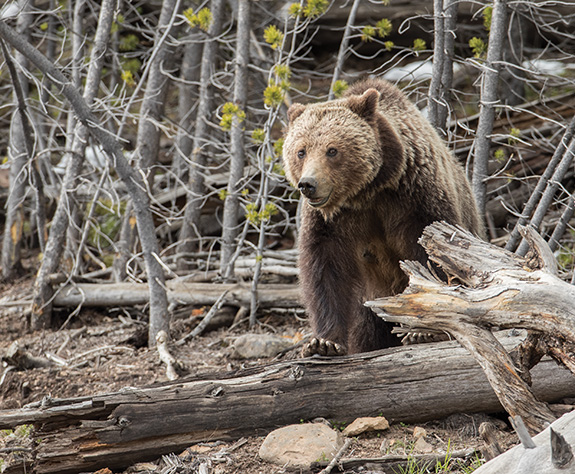
Except that it wasn’t devastation. It was nature doing her thing. In 1989, when I started working in the Greater Yellowstone, esteemed Jackson Hole ecologist Dr. Susan Clark advised me not to focus on protecting individual species of wildlife, but rather focus on maintaining the ecological processes that keep Greater Yellowstone healthy: fire, floods, predation, herbivory, avalanches, insect outbreaks, landslides, etc. All that stuff that we call “disasters” is actually what makes the Greater Yellowstone Ecosystem tick.
On this particular trip, we saw that in spades. Hunkered down during a lightning storm, we noticed that the burn surrounding us was full of vigorous young lodgepole and fir trees threading their way through downed timber. Further up the slopes, young whitebark pines were filling gaps left by their dying parents. When we began our hike, the streams were full of sediment from a summer deluge. A couple of days later, trout were rising in crystal-clear waters.
And then there was the grizzly scat. In maybe the most ravaged drainage we had seen in 20 years, we observed the most bear scat—every few hundred yards, for miles! There was something in that toasted landscape that bears must really love. Needless to say, we didn’t sleep so well at night.
The American public, many politicians, even some conservationists, hate the thought of Mother Nature Gone Wild on our public lands. We hear that our forests are sick, unhealthy, in need of resuscitation—often with chainsaws. In other words, they are a mess.
Maybe that’s true in some places. But here in the Greater Yellowstone, we have Wilderness Areas where nature can go wild, and we can sit back and see what happens. Wilderness offers us a baseline upon which to measure the impacts we are having on the planet. For example, how are we going to develop sustainable forestry practices if we don’t understand how natural forest processes work? That can only happen when you let those processes play out on a grand scale. That would be in a designated Wilderness.
A thoughtful county official I know often talks about a trip he took to Germany to see how they manage their forests. He proposed that we too adopt their manicured approach to silvaculture. I have visited those woodlands and indeed they are pretty, in the same way that the King and Queen of the prom are pretty. But who wants to live in a world where everyone looks so perfect? There’s a reason why Germans love visiting Yellowstone.
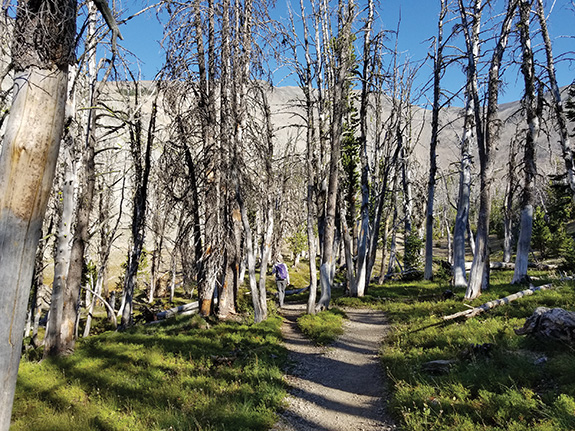
Back home in Livingston after our last Wilderness sojourn, a friend wanted to know about our wildlife encounters: “What was the coolest thing you saw?” Though he expected something out the movie The Revenant, I told him about an experience we had after a strenuous climb up a steep, hot, burned slope with absolutely no shade. Exhausted, we plopped down on a fallen snag to gulp some water. A few feet away, thousands of winged insects poured out of a rotten log. Like one of those crazy North Korean choreographed parades, they marched in long columns about 30 feet up a bleached snag and then launched themselves into the wind. Where they were heading, and why, was a mystery to us. And maybe even to forest ecologists.
I couldn’t help thinking that those critters were doing something important for the Greater Yellowstone Ecosystem, and maybe even for us human beings if we could only figure it out. But without Wilderness, that wouldn’t be possible. It’s more than just a playground for outdoor recreationists; it’s a laboratory, and maybe one of the most important on Earth. Even more significant, while it may seem empty and “underused” by some, it’s an incredibly busy place for wild nature, in part because it is underused by humans. Is that really such a bad thing?
Dennis Glick is an avid conservationist, outdoorsman, and director of Future West in Bozeman.


